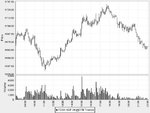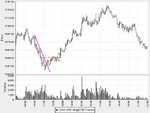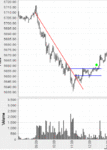dbphoenix
Guest Author
- Messages
- 6,954
- Likes
- 1,266
firewalker99 said:I see the difference between Szimba's and my analysis. It's cleary coming from a different "mind". But how does one learn to profit from situations, signals, moves, without thinking about what to do next? I'm not a scalper and I'm not trying to "act" all day long. So fine if I have to stick to looking at what's in front of me instead of thinking about what to do next, but I wonder at want point a trader acknowledges his/her signal if he keeps focusing on what's behind him instead of for instance anticipating what could be a retest of support at a later time without keeping that in the back of his mind.
We seem to be stuck in a loop here. You're not focusing on what's behind you; you're focusing on what's in front of you. If your strategy says buy when price breaks above R or short when price breaks below S, then you buy when price breaks above R or short when price breaks below S. If price doesn't break above R or below S, then you do nothing. If you're unable to do either, then you haven't tested your strategy thoroughly enough. If you haven't tested it thoroughly enough, or at all, then perhaps you haven't defined it well enough to test it.
If you've adequately defined what it is you're looking for and if you've tested it to the point where you know how likely one outcome will be over another and if you've thoroughly planned your trading day, the question of "what to do" does not come up.
Your puzzlement may arise from a desire to use something off the shelf rather than create something of your own. This is generally considered to be a short cut, but can be an expensive one if the trader doesn't bother to test the system. You have to test whatever you do before putting your capital at risk regardless of where the strategy comes from. Risking your capital isn't going to make the strategy work any better or any faster.
Db






